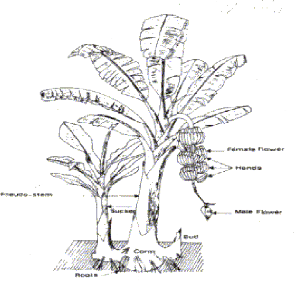1.4 Importance of the Study.
The GIS will provide a means of measuring spatial and
attribute data in a computerized database system, thereby allowing input,
storage, retrieval and analysis of geographically referenced data. It will
analyze spatial interactions between static and dynamic entities and will be a
simulation tool for actual field situations.
Spatial representation of the results will help in the
localization of disfavored branches during irrigation periods. This will lead
to the adoption of management rules and the scheduling of interventions at the
level of the system (reinforcement, reduction of flow rates...) if necessary.
However, spatial representation of periodic data for performance parameters
compared to crop water requirements will help irrigation managers to locate
over consumption, water loss in the plot and other eventual problems in the
system.
The study will help in the development of better water
management options of maximizing profits on capital invested. This is because
the cost of irrigation ranks first on the cost items of the company.
To some extent, the GIS would help in the management of other
farm operations such as fertilization, planting, and harvesting as the database
created contains tables with
information on the agronomic state of production plots. The
management of these operations could thus be represented spatially for better
monitoring.
On the socio economic point of view, amelioration of water
management techniques and an increase in profits will probably lead to more
area being put under cultivation thereby increasing the number of jobs in the
Njombé-Penja area.
The study is a step towards the generation of information
necessary for managing water efficiently.
CHAPTER II
LITERATURE REVIEW
2.1 Banana
2.1.1 Introduction
Banana is a monocotyledon of the Order: Scitaminales, Family:
Musa, Sub-family: Musoideae (Stover and Simmonds, 1987). Valmayor (1991) used
15 plant morphological characters to score commercial banana cultivars into one
species or another. Stover and Simmonds (1987) distinguish two banana species,
namely Musa acuminata and Musa balbisiana. Commercial
cultivars are mainly triploids of the genus Musa (Lane, 1955). The cultivated
cultivar of the sub-tropics is of the Cavendish sub-group. This sub-group is
made up of the Grand Nain (GN) and the Williams cultivars with the Williams
cultivar gaining more popularity due to its hardiness, superior bunch
conformation and ease of packing.
Banana is a herbaceous plant; it has an upper pseudostem and
an underground part. The upper trunk could have heights ranging from 1.5-8 m
depending on the species (Lassoudiere, 1979; Stover, 1979). The average heights
of cultivated cultivars could be as short as 1.5 m in dwarf plants or as tall
as 8 m in a ratoon crop of GN or W cultivars. The root system is fleshy and
adventitious. Horizontal and vertical distribution of roots is strongly
influenced by soil type, compaction and drainage (Riopel & Steeves, 1964;
Summerville, 1939). Horizontal extension of primary roots is usually between
1-2 m but can be as long as 5 m (Robinson, 1987). The vertical root zone is
very shallow with 40 % of the root volume in the top 200 mm and 85 % in the top
300 mm of soil. However, effective root depth for irrigation purposes stands at
500 mm. Mature leaf length is between 1.8 m and 2.4 m, with a width of about 1
m. A vigorous ratoon plant has about 24 m2 functional leaf area at
its morphological peak. Fruits are formed on =hands` with about 12 fingers;
each bunch can carry up to 150 fingers. After harvest, the pseudo stem is cut
down.
Three banana production systems can be distinguished: the
traditional, semi traditional and modern systems of production. All these three
systems are practised in Cameroon, supplying the local and world markets with
banana (Fonsah and Chidebelu, 1985). PHP group practices the modern system
which entails much care. The agricultural
activities carried out include: nursery and soil preparation,
planting, propping, pruning, weed and pest management, fertilizer application,
deleafing, fruit care, selection of suckers, replanting, harvest and
exportation (Robinson and De Villier, 2007).

Source: Robinson and De Villier, 2007 Figure 2.1:
Morphology of a banana plant
| 


